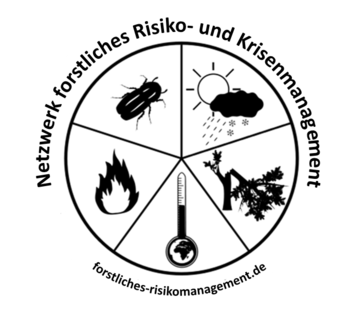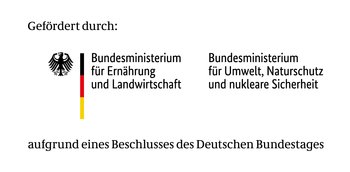Observation posts, located on watch towers to detect forest fires, are more and more a thing of the past. This is because working in these towers is psychologically and physically demanding. Particularly during the hot summer months temperatures in these towers, which are not equipped with sanitation or water, can reach over 40 °C. Modern early warning and detection of forest fires occurs automatically via an Optical Sensor System (OSS) (also called automated forest fire early warning system).
The foundations for this type of monitoring came from the German Aerospace Centre, where the original software and some of the senor component parts were developed during preparations for a space mission. This system was brought into production by the IQ Wireless Ltd who, in collaboration with the German federal state of Brandenburg in 1999, tested and further developed it. Today, a total of 109 cameras monitor the forested lands in Brandenburg and these intelligent sensory systems are also used in the German states of Mecklenburg-Western Pomeranian, Saxony, Saxon-Anhalt and Lower Saxony.
Automated forest fire early warning systems
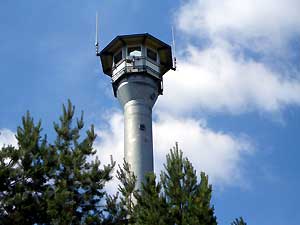
Fig. 1: Fire lookout tower Malkwitz. (Photo: D. Spörck)
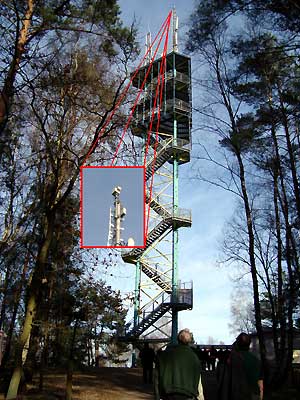
Fig. 2: Camera on a tower in the Müritz National Park. (Photo: FVA/Kaulfuß)
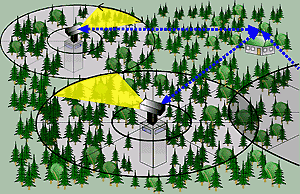
Fig. 3: Automated Forest Fire Monitoring System "Fire Watch". Sectors and images are shown on a monitor; the detected fire location is identified on a topographical map. (Source: IQ wireless Ltd)
Mounted on former fire watch towers, cell phone masts or tall buildings, they capture smoke clouds in a radius of up to 15 km with a minimum size of 10m x 10m. The optical sensor rotates on its own axis and provides a continuous 360° panorama. Three scans, or pictures, are created every 10°. The pictures are compared and analysed. The system can show the smallest changes in the atmosphere due to the very fine greyscale used (more than 16,000 shades) and mark the point of origin of a smoke cloud on an electronic map. Hence, forest fires can be detected at an early stage (when they begin to smouldering). With a rotation of 4–8 minutes (the settings can be varied) each system monitors a forest area of approximately 70,000 ha.
Today there are still 11 forest fire control centres in Brandenburg which evaluate photographic data transmitted by ISDN or radio. These centres are generally found in the former operations offices of the state forest enterprise and have one to four operator work stations as well as a manager’s work station in many cases.
Brandenburg is currently preparing to merge the 11 existing evaluation units into six modern state forest fire centres. The first new forest fire centre will take up its duties in Wünsdorf during the forest fire season. In Mecklenburg-Western Pomeranian monitoring is undertaken by four camera monitoring centres which are assigned to the main forest offices.
If the centre receives a smoke alert, the operators use computed-aided methods of image analysis to clarify if it really is a forest fire or only a dust cloud from a combine harvester. If a real forest fire is identified the data is handed to the manager who coordinates further operations, precisely locates the fire location and finally informs the fire service. Visualizing the situation using individual pictures and maps enables all involved parties to be comprehensively informed.
The forest fire, or camera monitoring, centres are staffed for different periods depending on the actual forest fire warning level. During warning levels III and IV monitoring is provided from 10 am to 8 pm. In Brandenburg, forest staffs provide an additional 24hour on call service. Using a modern camera system has not significantly changed the average number of forest fires in Brandenburg for example, however thanks to the early detection and fast deployment of the fire service, the average forest area destroyed by fire has reduced. About 60 % of all forest fires were discovered by the sensors, the remaining fires occurred on nights when the optical sensor system was to a certain extent "blind". In the mean time, the system has been further developed with an option of night detection and analysis. The system is being continually developed and enhanced both in the soft and hardware areas and in its operational processes.
Other possibilities for forest fire monitoring
When the forest fire warning level is above III in Mecklenburg-Western Pomeranian, the automated monitoring is supplemented by patrols, operating out of the local forest office, in forest fire risk areas classified as danger class A and B or in extremely hazardous situations. The patrols regularly monitor particularly endangered areas. In Mecklenburg-Western Pomeranian, forest owners of non-state forests larger than 30 ha can also be requested to implement forest fire patrols.
In areas with a low forest fire hazard, aerial surveillance in times of high forest fire danger is a possible means of early forest fire detection. Alongside regulatory authority surveillance flights (e.g. fire service air service in Lower Saxony), commercial airlines or private amateur pilots can be used to fly pre-determined routes. This form of collaboration is practiced in Saxony, Bavaria and Brandenburg for example. Besides the early detection and location of forest fires, this aerial support can also be helpful in directing the operational forces on the ground.
Literature
- Anonymus (2005): Automatischer Waldbrandwächter. Adlershof Aktuell, November 2005: 7
- Engel, R. (2009): Brandenburg setzt flächendeckend auf “Fire Watch”. AFZ-Der Wald 12: 632-634
- König, H.-C. (2007): Waldbrandschutz. Kompendium für Forst und Feuerwehr. Supplement Band 1, Hrsg. Mathias Bessel, Fachverlag Matthias Grimm, 197 S.
- Landesforst Mecklenburg-Vorpommern (1999): Durchführungserlass zum Gemeinsamen Waldbrandrunderlass des Ministerium für Landwirtschaft, Umwelt und Verbraucherschutz und Innenministeriums. Lesefassung 15. Juni 2009
- Ministerium für Ländliche Entwicklung, Umwelt und Verbraucherschutz des Landes Brandenburg [Hrsg.] (2009): Waldbrandschutz in Brandenburg – Früherkennung und Überwachung mit System. Broschüre, Potsdam
Forest Crises Management Advisory Guide
Back to the main page of the Forestry Crisis Management Advisor Guide: Overview of the different topic collections
Back to the article overview in the: Forest fire Topic Collection

